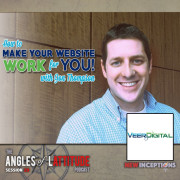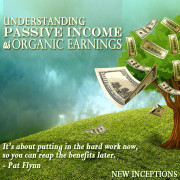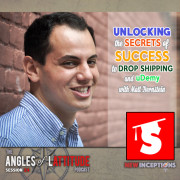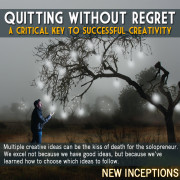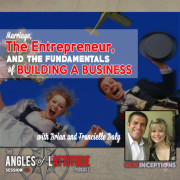AoL 029: How to Make Your Website Work for You! with Jon Thompson
When doing business in today’s world, one of the basic things that we have to have is a website. It’s the central hub to all of our social media and it’s where we own EVERYTHING that’s on it. It’s not rented space (meaning that if we have content elsewhere, if that company were to ever break ties with us or that they just bellied up, we would lose our business from there). When you have your own site, you protect yourself from these issues.
However, once you have that website up, there’s always going to be all kinds of maintenance that you have to do to keep it relevant. One of the easiest ways to drive Search Engines to your site is to produce content on a regular basis (just like this!). Other things that you can do include SEO (Search Engine Optimization) and SEM (Search Engine Marketing – if you’ve never heard of SEM, you might have heard of backlinking which is part of it.)
Like many people who do online marketing for a living, I know a thing or two about making websites. Once you do it once or twice and you’re used to running your site, then you can help others get there. However, that’s really just scratching the surface. There’s so much more that goes into having a successful website, it’s not even funny.
This session’s guest has made helping people do all those other things that make a successful website his business. From getting one up from scratch to helping simply with SEO and SEM, Jon has his clients covered. Working in an efficient, transparent, and very communication centric manner, he doesn’t try to sell people and small companies a one size fits all solution. He’s all about customer service. Which in the online world can be somewhat rare – especially since a lot of hosting companies are moving towards easy one size for everyone solution methods.
In this particular chat with Jon, we discuss how he lined himself up for success, why you should be aware of what SEO and SEM are, the importance of knowing keywords when creating your website, and why he believes customer service is so important – today more than ever. We also touch on how he got into the work he does and what kind of clients he likes to have.
Whether you’re looking to get your website noticed in an ocean of websites, or you’re simply thinking about being a freelancer that does similar things, this is a good talk for you.
SPECIFICALLY, YOU’LL FIND OUT MORE ABOUT:
- Why VeerDigital’s service description is somewhat vague.
- How he lined himself up for success in the field that he eventually started a business in.
- Why he believes that people need to stick with their strengths with anything that they do.
- What he got out of his first experience in a startup.
- How mentors have set him up for success.
- What SEO and SEM are and why it’s important to know what they are and how they work.
- Why you should still have your own website.
- The importance of knowing keywords when creating your website (and maintaining it in the future).
- Why customer service is so important today.
- Why it’s important for service providers to be highly transparent and be proactive with their clients.
- What kind of quality Jon looks for in the clients that he chooses to work with.
- Where Jon’s drop shipping company came from.
- Where Jon sees his business being in a few years.
- …and MUCH more.
Right click here and save-as to download this episode to your computer.
ITEMS and PEOPLE MENTIONED IN THIS EPISODE:
- VeerDigital
- Be Our Guest Vacations
- SEMRush
- Fizzle Show Episode: Blogging Is Dead Again (FS146)
- Find Freelance Work: Fiverr, Upwork (Want to make real money on Fiverr? Check out this guide by Lewis Parrott.)
- Search Engine Resources: SE Land, SE Watch, SE Journal, Moz
- The Power of Habit by Charles Duhigg (Amazon Link)
- BBQ Season
- Feedly for RSS (or New Inception’s favorite: Inoreader)
- Fizzle – Stop guessing about what you need to do next in your business! Get a roadmap! (Get two weeks free by using this link.)
SHOW NOTE EXTRAS:
Search Engine Optimization Crash Course
SEO Tutorial 2016: A Beginner’s Guide to SEO
How Can Small Sites Become Popular?
How does Google Search Work?
SEO for startups in under 10 minutes
BONUS: Creating Great Content that performs well in Google Search Results
Thanks for Listening!
Thanks so much for joining us again this week. Have some feedback you’d like to share? Leave a note in the comment section below!
If you enjoyed this episode, please share it using the social media buttons you see at the top of the post.
Also, please leave an honest review for The AoL Podcast on iTunes! Ratings and reviews are extremely helpful and greatly appreciated! They do matter in the rankings of the show, and we read each and every one of them.
If you have any questions feel free to email them over via the email mentioned in the show or by our contact form.
And finally, don’t forget to subscribe to the show on iTunes, Stitcher, and/or Podbean. It’s absolutely free to do so.
A huge thank-you to you guys for joining us!
Cheers!

